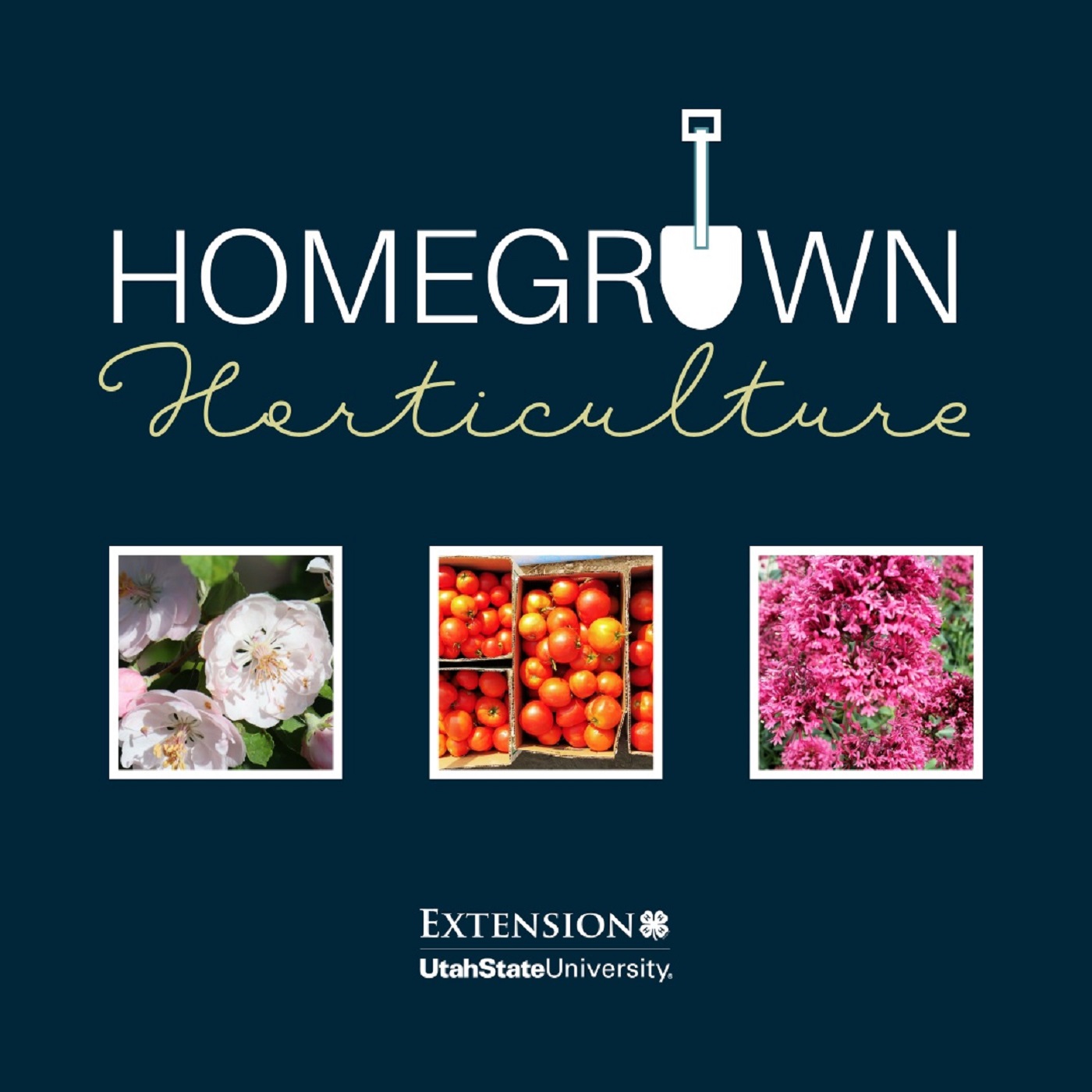Easy to Grow Shade Tolerant Perennials
Link to Survey
https://forms.gle/J75bZQoWJA9TH53F9
Hyperlinks
Brunnera: https://hort.extension.wisc.edu/articles/brunnera-macrophylla-jack-frost/
Corydalis: https://hort.extension.wisc.edu/articles/yellow-corydalis-corydalis-lutea/
Anemone: https://hgic.clemson.edu/fall-flowering-japanese-anemone/
Leopard’s Bane: https://plants.ces.ncsu.edu/plants/doronicum/
Hashtags
#utahgardener #garden #gardening #perennials #shadedareas #plants #shadelovingperennials #shade #corydalis #brunnera #leopardsbane #CoralBells #hosta #perennialgeraniums #Larkspur #monkshood #springanemones #Columbine #forgetmenots #homegrownhorticulture #horticulture #gardeningpodcast #flowers #flowerbed #spring #springplanting #blooming #easytogrow #shadetolerant #easyperennials
Transcript
And welcome back to the Homegrown Horticulture podcast my name is Taun Beddes, I am a horticulturist with Utah State University Extension. Before starting with extension, I spent 15 years in the nursery industry. I spent much of this time selling plants to the general public and one of the more common questions I got was, “we have shaded areas around our yard and nothing thrives. What can we plant that will actually do well in the shade?” And so that's what we're going to talk about today.
Additionally, before I get into the main topic, I'm going to include a brief survey. The survey helps me know how to provide the best podcast I can. It asks basic questions on how we're doing and how we can improve. If you would be so kind to fill out the survey I would greatly appreciate it.
I was thinking about the topic for this week's podcast, and then the shade perennial theme came up, I took a few minutes just to list some shade tolerant perennials that I could think of just off the top of my head. The ones that came up with were Corydalis, fall blooming anemone, brunnera, leopard’s Bane, Coral Bells, hosta, perennial geraniums, Larkspur, monkshood, spring anemones, Columbine and forget-me-nots. There are many more, but these are ones that are very commonly available at local garden centers.
Of these, I'm going to talk about three or four of them that I just especially like. The first of these is a very pretty and called corydalis. Sometimes is referred to as fumitory. It's spelled c-o-r-y-d-a-l-i-s. Corydalis has never been terribly popular, but it's relatively reliable and especially in the spring through early summer, it is quite pretty. The species you usually find is corydalis lutea. I believe in Latin means yellow and so this is a yellow flowering corydalis. It can be a little difficult to find sometimes at local garden centers, but you can find it, or order it online. Corydalis loves cool weather. It thrives April through June and then oftentimes especially in hotter areas, it goes dormant (for the summer) and will partially come back in the fall. It is somewhat shorter lived. You can expect three to five years (out of it), but it's also self-sowing. And so, as it gets established you may not even notice that the original plant died, because those seeds will come back. It isn't terribly aggressive, and as you see the seedlings come up in the spring, you can just gently dig them and move them or rogue them out if you don't need them.
There are many kinds of corydalis available. Even though I am very partial to the yellow species, there are many hybrids and other species that are oftentimes blue in color. They're actually quite pretty.
My next shade tolerant perennial is called Brunnera. Brunnera goes by a number of other names such as heartleaf alkanet, Siberian bugloss and also false forget-me-not is another one. It grows to 18 in high and wide. It can be placed in the back of a flower bed as a foundation plant. Cultivars of Brunnera are available. A lot of them have very beautiful variegated leaves with combinations of silver and green. There's also several yellow leaf varieties available. Another great feature of Brunnera is that it has beautiful blue flowers in mid-spring. They're very small, but the plants can produce hundreds of them. They mix very well with other spring-flowering bulbs and perennials, especially with daffodils or other yellow plants such as leopard's bane.
It has a relatively long life, and is very durable as far as plants go, especially if they're planted on an east exposure. They're perfectly happy but usually do well even on the north side of a building or home.
Sometimes, because they do like that shade, some of the older foliage can look just a little bit tired by midseason. If you have a few leaves that are a little bit scorched, it is perfectly fine to take some shears and individually cut those leaves off of the plant following the stem back in toward the middle so you're not cutting that plant Morticia Addams style, with a bunch of bear stems.
The next set of shade perennials I want to talk about are called anemones. Anemone when you look at how it is spelled, looks like a anemone, but it's actually pronounced anemone. Anemones have a couple of flowering groups. Certain species bloom in the spring while others bloom in late summer and fall. There's a multitude of flower colors ranging from purple, pink, white, and red.
Spring blooming anemones are planted in the fall when you plant other bulbs like the Tulips and daffodils. The foliage (on spring blooming anemones) looks beautiful in the spring as well as the flowers. They generally die back as temperatures warm up like other bulbs do. Once the foliage is yellow and brown is fine to cut them back.
Fall blooming anemones are often called Japanese anemones, even though they are native to China. They will emerge in the spring and keep their foliage all summer long and then depending on the cultivar, you will start to see flowers show up in August through September and some of them bloom through early October.
One of the concerns I've heard from folks about fall-blooming anemones is that they can get big. I mentioned earlier they can reach 2 to 3 feet high and wide. It's not really a problem, but you just need to be careful not to put them too close to other plants, because oftentimes as the anemone grows it wins and chokes out other things that you want in your flowerbed.
One of the reasons I've included these pretty perennials in my list is that they are some I would grow in my own yard because I think they're beautiful. But also, they are low maintenance. And so, the last one here I want to talk about is called Leopard’s bane. It's spelled d o r o n i c u m. The most common cultivar that you'll find local at garden centers is called the Little Leo, and it gets about a foot high and wide.
The reason I really like this perennial is that it is spring blooming, and it is a yellow Daisy. It is the only yellow Daisy I know of that blooms in the spring and also tolerates shade. It mixes well with other spring blooming perennials and is pretty low-maintenance.
Like other spring blooming flowers it can go dormant when the weather gets hot, and, if it does, it's not a problem. It'll come back next spring. It generally grows in your flower bed for around four or five years before they fade out and need to be replanted or replaced with something else. I feel like it is worth growing.
With few exceptions, these perennials I've listed will be hardy to at least USDA zone 5; many of them Zone 4. But just be careful and always check the included plant tag to be sure that the particular plant you're interested in is cold hardy for your area.
There's so many more perennials that we could talk about we could just go on and on about. Thank you so much for listening. I greatly appreciate your time. If you do have the time, I'd appreciate you going to the show notes and finding the hyperlink to the survey. Please go through it. It's only going to be five or six questions. It will greatly help us improve the quality of the podcast.
Thank you again. The Homegrown Horticulture podcast is a production of Utah State University extension. The intro and outro music was written by Savannah Peterson, a Utah State University extension horticulturist and talented musician. It is used by permission.


